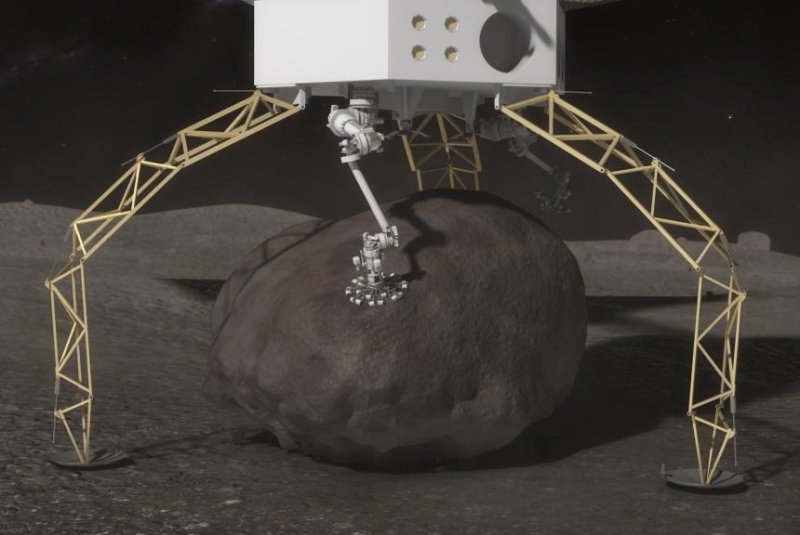An artistic rendering of the ARM craft's boulder grabbing capabilities. Photo by NASA
WASHINGTON, March 26 (UPI) -- As of 2015, there are no known subsatellites, or moons of moons. NASA hopes to change that, sort of. Engineers at the United States space agency want to capture an asteroid chunk (or boulder) and put into orbit around Earth's moon.
The mission is called the Asteroid Redirect Mission, and officials at NASA recently announced that scientists are making progress -- or at least making more detailed plans.
In a press release shared Wednesday, NASA announced that it would name the mission's asteroid target in 2019 and launch the unmanned ARM spacecraft in 2020.
"The Asteroid Redirect Mission will provide an initial demonstration of several spaceflight capabilities we will need to send astronauts deeper into space, and eventually, to Mars," NASA Associate Administrator Robert Lightfoot said in the release. "The option to retrieve a boulder from an asteroid will have a direct impact on planning for future human missions to deep space and begin a new era of spaceflight."
As part of the $1.25 billion mission, engineers plan to build and test a spacecraft outfitted with a robotic arm capable of plucking a boulder off the surface of an asteroid. The craft will test a solar electronic propulsion system, technology that converts solar energy into charged particles that are expelled to generate thrust. The technology is key for future Mars missions, as lugging lots of fuel isn't feasible for long-distance missions.
Researchers estimate it will take roughly six years to transport the boulder from asteroid to lunar orbit. Along the way, a two-man space crew will navigate Orion -- the deep-space craft currently in testing -- for a rendezvous.
"This crewed mission will further test many capabilities needed to advance human spaceflight for deep space missions to Mars and elsewhere," officials wrote in the release, "including new sensor technologies and a docking system that will connect Orion to the robotic spacecraft carrying the asteroid mass."
Though it won't be official for another four years, scientists say the most likely target destination for the mission is an asteroid known as 2008 EV5, a quarter-mile-wide space rock classified as a near-Earth Aten asteroid.
It would take the ARM craft roughly two years to reach the asteroid. After 400-plus days of orbital observations, the boulder-grab would be executed. If it all goes as planned, the moon could have a companion by the end of the next decade.















